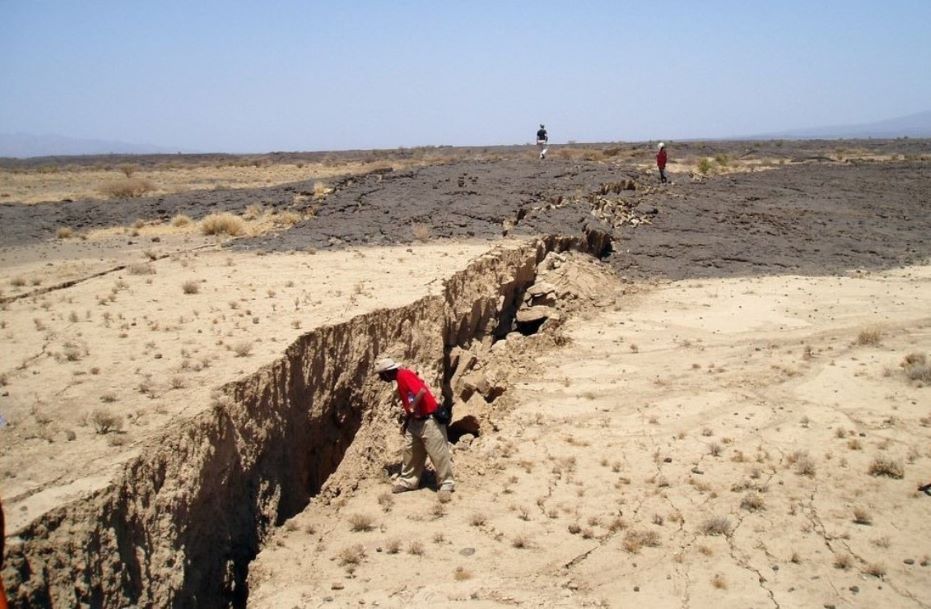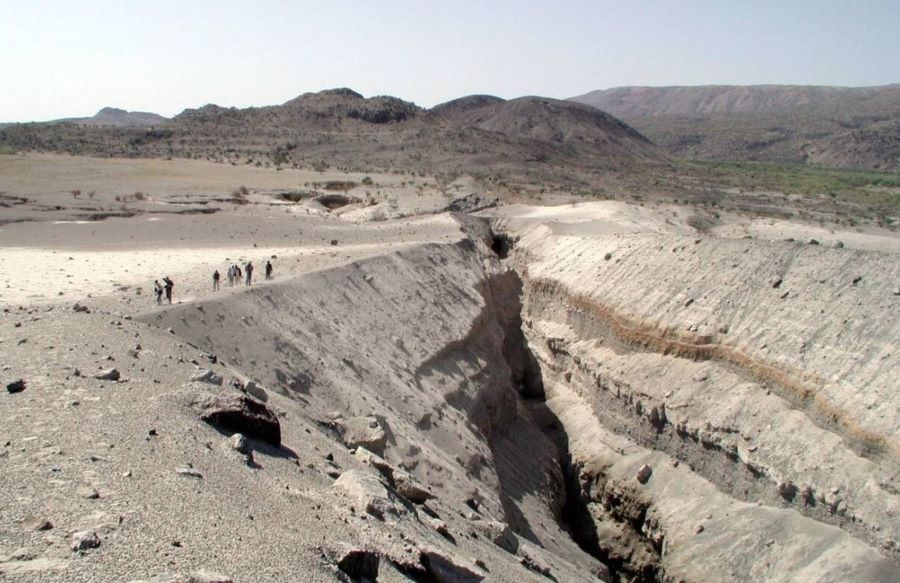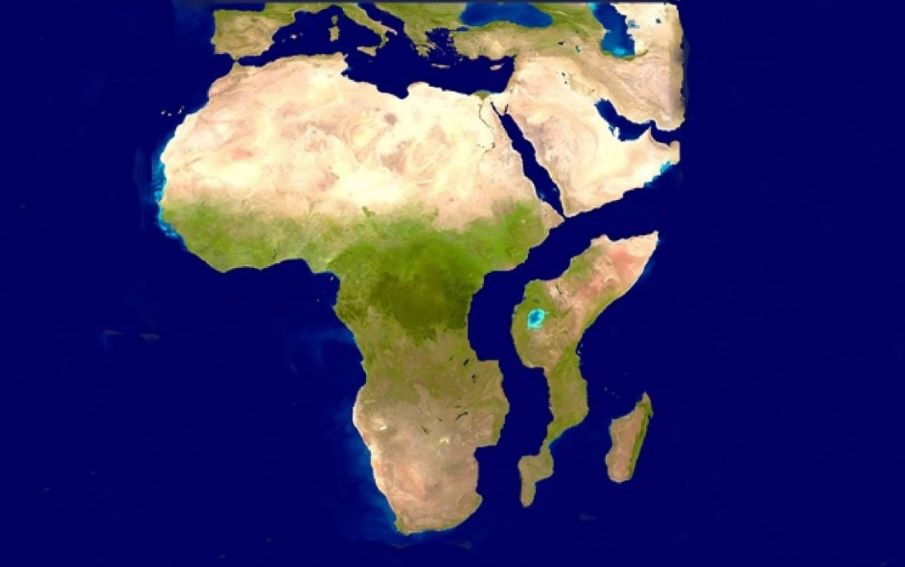Africa is splitting to form a new ocean
Africa is gradually tearing apart, and scientists predict the birth of a new ocean in the next 5 to 10 million years. The process is occurring along a 35-mile crack in Ethiopia's Afar region, where three tectonic plates - Nubian, Somali, and Arabian - are pulling away from each other.
Satellite measurements provide crucial insights into this geological phenomenon and confirm the findings of a study published back in 2004.

The crack in the Afar region. Credit: Earthlymission
The African continent's fate has been under scrutiny for decades, with recent GPS instruments revolutionizing research and enabling precise measurements of ground movement right before our eyes.
More to read:
[video] Scientists officially map out Earth’s 8th continent
The Arabian plate is gradually moving away from Africa, enlarging the Red Sea and the Gulf of Aden.
Simultaneously, the Somali plate in eastern Africa is stretching away from the Nubian plate along the East African Rift Valley.

The crack in the Afar region. Credit: Earthlymission
The Afar region, where this rift is occurring, serves as a challenging but vital laboratory for studying continental rifts turning into oceanic rifts. The environment, often described as "Dante's inferno" due to extreme temperatures, hosts a 35-mile-long crack that opened up in 2005.
Scientists remain uncertain about the exact cause of the continent's rift, with some proposing a superheated rock plume from the mantle beneath East Africa. Geological researcher Cynthia Ebinger suggests that rising magma pressure triggers explosive events in the Afar region, comparing it to overfilling a balloon.

Al illustration of what Africa will look like in 10 million years. Credit: Earthlymission
As the plates separate at different speeds, a mid-ocean ridge system is forming, indicating the eventual creation of a new ocean. The Arabian plate is moving away from Africa at approximately 1 inch per year, while the two African plates are separating more slowly. The ultimate result will be the flooding of the Afar region by the Gulf of Aden and the Red Sea, forming a new ocean and transforming part of East Africa into a separate small continent.
While this split offers new coastlines for currently landlocked countries like Ethiopia and Uganda, the complete division of Africa into two and the emergence of the new ocean are projections for the distant future, expected to unfold over the next 5 to 10 million years.

The main stages of the rift. Credit ScienceDirect
The future continent does not have a name yet.








